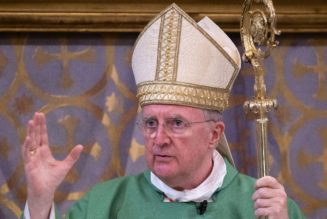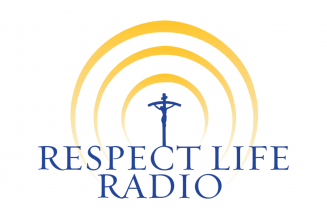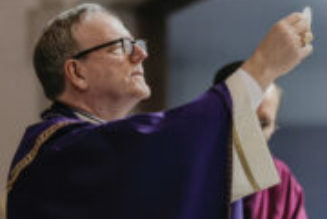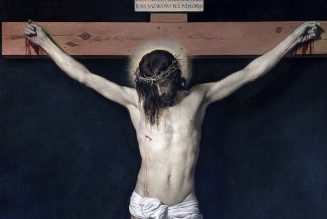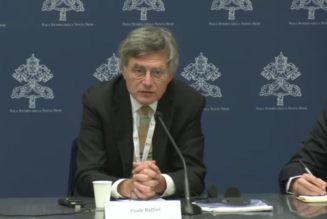St. Mary Major & Blessed Frédéric Janssoone
August 5, 2021 by Amy Welborn
Today is the feast of the dedication of the Basilica of Santa Maria Maggiore in Rome:
The Council of Ephesus in 431 formally proclaimed the mother of Jesus as the Mother of God, and the church (basilica) of St Mary Major on the Esquiline Hill in Rome was built shortly afterwards to celebrate her motherhood. This is the oldest church in the West that is dedicated to Our Lady. More
My most memorable visit to the Basilica occurred back in 2006, when we all visited Rome, and then Irish seminarian-blogger -Zadok led us on a tour of St. John Lateran and St. Mary Major. It was a great day with the exception of the burden of me carrying the 14-month old baby on my back up the Esquiline Hill, a baby who delighted in yanking on my hair, but much preferred riding on my back to his dad’s and would make his preferences known, loudly, so I was stuck.
****
Today is the memorial of another blessed of whom I’d never heard before a couple of years ago, but whose story is well worth your time – again, for what it tells us about the varied roads to Christ and sanctity and how meandering the road can be after we say “yes.”
The son of a prosperous and devout farming family, Frederic Janssoone was born on November 19, 1838, in Ghyveldge, in the North of France. His father died when Frederic was only nine. He attended secondary school in Hazebrouck and then Dunkirk, but in 1856, he had to leave school to support his mother. He found work as an errand boy, and eventually had great success as a travelling salesman. After his mother died, in 1861, he was able to complete his studies.
In 1864, he entered the novitiate of the Franciscan Order of Friars Minor in Amiens. Ordained a priest in 1870, he was a military chaplain during the Franco-Prussian War. Afterwards, he became assistant novice director and librarian. He then became superior of the community in Bordeaux. In 1876, he travelled to the Custody of the Holy Land.
He became chaplain for the Brothers of the Christian Schools in Cairo, and gave preached retreats there and in Alexandria. Between 1878 and 1888, he was assistant to the head guard of the Sacred Sites in Palestine. He helped with administration, promoted a renewal of the custom of Holy Land pilgrimages, reestablished the ritual of the Way of the Cross in the streets of Jerusalem, and directed construction of the Church of the Nativity in Bethlehem. He revised the set of customary regulations that had developed through the centuries between the Latins, the Greeks, and the Armenians for the use and maintenance of the shrines of Bethlehem and the Holy
Sepulchre
…and we’re not done yet:
He settled in Canada for good in 1888. He lived in Trois-Rivières, where he became closely involved with the organization and development of the pilgrimage of Our Lady of the Rosary that had been started up by Father Luc Désilets at nearby Cap-de-la-Madeleine. He promoted the Franciscan Third Order in Quebec and New England. He created three outdoor Ways of the Cross, organized conferences and pilgrimages, and gave many preached retreats. He also wrote magazine and newspaper articles, booklets, works on the Holy Land, lives of Jesus, Mary, Saint Anne, Saint Joseph, Saint Francis of Assisi, Saint Anthony of Padua and the first Franciscan born in Canada, the Venerable Brother Didace Pelletier.
Father Frederic paved the way for the reestablishment in Canada of the Order of Friars Minor, which had ceased to exist with the death of the last Recollet in 1812. Father Frederic, the former travelling salesman, had become a peddler for God. He travelled from one parish to another in several Quebec dioceses, and went door-to-door selling his works. The profit from his sales went toward the establishment of several communities of consecrated life: the Franciscan Missionaries of Mary, the Poor Clares, the Franciscans of Trois-Rivières, and the Sister Adorers of the Precious Blood of Joliette. He died of stomach cancer in Montreal on August 4, 1916. Father Frederic is buried in Trois-Rivières. He was beatified by Pope (now Saint) John Paul II on September 25, 1988.
More from that source – from the website of the Canadian bishops.
This entry from the Dictionary of Canadian Biography is actually more detailed and interesting:
Father Frédéric’s initial visit to Quebec was a fund-raising tour occasioned by the fact that charitable donations promised for the construction of St Catherine’s Church were slow in coming. He arrived in Lévis from New York on 24 Aug. 1881. Apart from the political uproar caused by an ill-advised speech on liberalism that he gave at Quebec on 10 Sept. 1881 (the hapless visitor was unaware of the fierce disputes on this subject that divided French Canadian politicians and bishops) his campaign was a triumph. The sermons he preached in Quebec City and Trois-Rivières met with tremendous success. On 24 March 1882 Archbishop Elzéar-Alexandre Taschereau* of Quebec, who in the interest of keeping the peace after Father Frédéric’s speech had asked him to leave the diocese temporarily, crowned his mission by publishing a pastoral letter which ordered that a collection for the Holy Land be taken in all the churches of the ecclesiastical province of Quebec every year, on Good Friday. A century later this custom is still followed in every Catholic church in Canada.
This is a vivid portrait of his preaching and fundraising tours:
In 1895, however, before his commitment at Notre-Dame-du-Cap was finished, Father Frédéric began the famous fund-raising drives that he was to conduct for some 15 years throughout a number of Quebec dioceses. This was the second of the great tasks to which he devoted his energy in Canada. Begun at the request of his superiors, these exhausting campaigns were intended to support diocesan or Franciscan works such as the Sanctuaire de l’Adoration Perpétuelle at Quebec, the monasteries of the Poor Clares in Salaberry-de-Valleyfield and the Sisters Adorers of the Precious Blood in Joliette, and the Franciscan friary in Trois-Rivières. Wearing a wretched skimpy brown coat, fasting and sleeping on the ground, Father Frédéric went from parish to parish and from house to house, braving inclement weather, bad roads, and farm dogs, preaching in the churches, comforting the sick and afflicted, and selling his books for the benefit of the causes entrusted to him, while keeping a small commission for the Holy Land. Thus he returned to some extent to his former occupation: he was now God’s travelling salesman. Charmed by his gentleness and courtesy, edified by his deep piety and incredible austerity, and above all amazed by the marvels that occurred here and there in his wake, the faithful saw him as another Francis of Assisi and were in the habit of calling him “the Holy Father.”
…
Father Frédéric’s preaching sounded like an informal talk, but it had a bit more hidden in it than was apparent. In order to reach his listeners more effectively, the holy man did not hesitate to dramatize or play to the utmost on their sensibilities. Many tears were shed during his sermons. Eager to be edifying, he always paid close attention to his appearance in public. Hence in group photos he often looks stiff and stilted, a posture out of keeping with his true temperament, which was kind and cheerful. But all these pious artifices, which irritated some of his colleagues, stemmed from his desire to save souls, a desire the crowds recognized. In common with all saints, he radiated a kind of spiritual aura which, like the Old Testament shekinah, was a true and palpable sign of the presence of God. Father Edmond Gaudron, who made his acquaintance at the Collège Séraphique de Montréal around 1917, has described this phenomenon very well: “He was the one who made God appear to men who could not see God.”
All in all, the role Father Frédéric played in Quebec was analogous to the one played in France by his compatriots Jean-Baptiste-Marie Vianney and Thérèse Martin: that of a living witness to the reality and holiness of God. It is to his credit that he succeeded in keeping to this path. When he arrived in Canada in 1881 the controversy about liberalism was raging. Abbé Desilets, his host, reportedly wanted to recruit him to support ultramontanism, a cause his bishop, Mgr Laflèche, also espoused. Between 1882 and 1888, however, the missionary from the Holy Land had time to ponder the question and decide on the course to pursue. In 1884 he wrote to his friend Provancher, another ardent ultramontane, that should he ever return to Canada, his work would be “exclusively a mission of charity, penitence, and peace.” It was a strictly spiritual program, patterned almost literally after the one St Francis of Assisi and his disciples had followed at the beginning of the 13th century. The sole objective of all his efforts during the 28 years he spent in the country was to win for God and for Christ the Canadians whom he loved so dearly, and to enhance their spiritual lives as much as possible.
Join Our Telegram Group : Salvation & Prosperity


